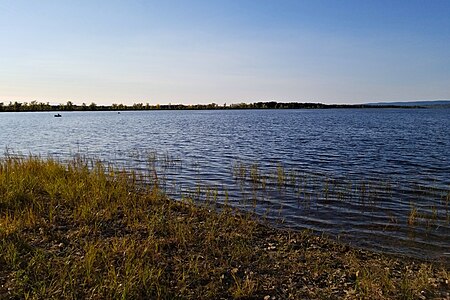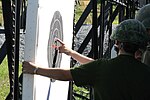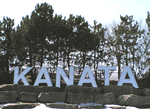Shirleys Bay

Shirleys Bay is a bay of the Ottawa River, about sixteen kilometres (10 miles) from downtown Ottawa in Ontario, Canada. Shirleys Bay also includes a significant wetland and nature preserve that is part of an Important Bird and Biodiversity Area the Lac Deschênes-Ottawa River IBA. It is also the name of a Canadian military and civilian telecommunication research campus that is located on the shore of the bay. Organizations with facilities at the site include Defence Research and Development Canada, Communications Research Centre, the Canadian Space Agency's David Florida Laboratory, Royal Canadian Mounted Police Firearms Training Unit, Department of Defence firearms training area, and the Connaught National Army Cadet Summer Training Centre. In October 1952, the Canadian government set up an observatory at the site to attempt to measure magnetic or radio noise disturbances. The area includes the Innis Point Bird Observatory and the Shirley's Bay Crown Game Preserve, which is managed by the Ottawa Duck Club.
Excerpt from the Wikipedia article Shirleys Bay (License: CC BY-SA 3.0, Authors, Images).Shirleys Bay
Ottawa Nepean
Geographical coordinates (GPS) Address Nearby Places Show on map
Geographical coordinates (GPS)
| Latitude | Longitude |
|---|---|
| N 45.375121 ° | E -75.897846 ° |
Address
Bay
Ottawa, Nepean
Ontario, Canada
Open on Google Maps



